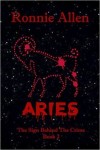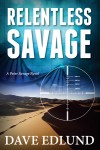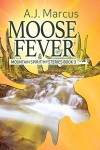

March 28 – April 3: “Discuss some of your favorite ‘door’ scenes.”
 More action may take place around doors than any other architectural feature. This week ITW Members Ronnie Allen, Dave Edlund, Glen Erik Hamilton and A. J. Marcus discuss some of their favorite “door” scenes.
More action may take place around doors than any other architectural feature. This week ITW Members Ronnie Allen, Dave Edlund, Glen Erik Hamilton and A. J. Marcus discuss some of their favorite “door” scenes.
~~~~~
 Ronnie Allen is a New York City native living in central Florida. She taught in the New York City Department of education for 33 years as well as holding licensure as a New York State school psychologist. In addition, she’s a Board Certified Holistic Health Practitioner specializing in alternative healing modalities. She uses her skills and education in the themes and plots of her psychological thrillers, Gemini and Aries.
Ronnie Allen is a New York City native living in central Florida. She taught in the New York City Department of education for 33 years as well as holding licensure as a New York State school psychologist. In addition, she’s a Board Certified Holistic Health Practitioner specializing in alternative healing modalities. She uses her skills and education in the themes and plots of her psychological thrillers, Gemini and Aries.
 A devoted fan of thrillers, Dave Edlund writes what he describes as science-action thrillers, blending cutting-edge science and engineering with present-day geopolitics. His debut novel Crossing Savage received a Ben Franklin Silver Medal (popular fiction) by the Independent Book Publishers Association, and was named an INDIEFAB finalist by Foreward Reviews Magazine (best new mystery/suspense). Relentless Savage was named by Apple iBooks as a 2015 best-pick for new mystery and suspense novels. Deadly Savage is scheduled for release in April.
A devoted fan of thrillers, Dave Edlund writes what he describes as science-action thrillers, blending cutting-edge science and engineering with present-day geopolitics. His debut novel Crossing Savage received a Ben Franklin Silver Medal (popular fiction) by the Independent Book Publishers Association, and was named an INDIEFAB finalist by Foreward Reviews Magazine (best new mystery/suspense). Relentless Savage was named by Apple iBooks as a 2015 best-pick for new mystery and suspense novels. Deadly Savage is scheduled for release in April.
 Glen Erik Hamilton’s debut novel PAST CRIMES was given a starred review by Publisher’s Weekly and Library Journal, and called “an exciting heir to the classic detective novel” by Kirkus. The next in the series, HARD COLD WINTER, will be published next March by William Morrow in the U.S. and Faber & Faber in the U.K. A native of Seattle, Glen grew up aboard a sailboat, and spent his youth finding trouble around the marinas and commercial docks and islands of the Pacific Northwest. He now lives in California with his family but frequently returns to his hometown to soak up the rain.
Glen Erik Hamilton’s debut novel PAST CRIMES was given a starred review by Publisher’s Weekly and Library Journal, and called “an exciting heir to the classic detective novel” by Kirkus. The next in the series, HARD COLD WINTER, will be published next March by William Morrow in the U.S. and Faber & Faber in the U.K. A native of Seattle, Glen grew up aboard a sailboat, and spent his youth finding trouble around the marinas and commercial docks and islands of the Pacific Northwest. He now lives in California with his family but frequently returns to his hometown to soak up the rain.
 A.J. Marcus has been writing to pass the time since high school. The stories he wrote helped him deal with life. A few years ago, he started sharing those stories with friends who enjoyed them, and he has started sending his works out into the world to share with other people. He lives in the mountains with his extremely supportive husband. They have a lot of critters, including dogs, cats, birds, horses, and rabbits. When not writing, A.J. spends a lot of time hiking, trail riding, or just driving in the mountains. Nature provides a lot of inspiration for his work and keeps him writing. He is also an avid photographer and falconer; don’t get him started talking about his birds because he won’t stop for a while.
A.J. Marcus has been writing to pass the time since high school. The stories he wrote helped him deal with life. A few years ago, he started sharing those stories with friends who enjoyed them, and he has started sending his works out into the world to share with other people. He lives in the mountains with his extremely supportive husband. They have a lot of critters, including dogs, cats, birds, horses, and rabbits. When not writing, A.J. spends a lot of time hiking, trail riding, or just driving in the mountains. Nature provides a lot of inspiration for his work and keeps him writing. He is also an avid photographer and falconer; don’t get him started talking about his birds because he won’t stop for a while.
- LAST GIRL MISSING with K.L. Murphy - July 25, 2024
- CHILD OF DUST with Yigal Zur - July 25, 2024
- THE RAVENWOOD CONSPIRACY with Michael Siverling - July 19, 2024
